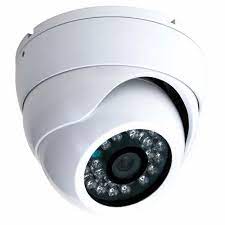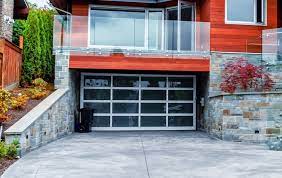Dome Camera: An All-Round Surveillance Solution
When it comes to security and surveillance systems, one of the most popular choices is the dome camera. With its sleek and unobtrusive design, the dome camera offers a versatile solution for monitoring various indoor and outdoor spaces.
The dome camera gets its name from its distinctive dome-shaped housing, which not only protects the camera but also makes it difficult for potential intruders to determine where the lens is pointing. This feature adds an extra layer of security, as it prevents individuals from knowing if they are being monitored or not.
One of the key advantages of a dome camera is its wide-angle view. Many dome cameras come equipped with pan-tilt-zoom (PTZ) functionality, allowing for easy adjustment of the viewing angle and zooming capabilities. This flexibility ensures that a single dome camera can cover a large area effectively, reducing the need for multiple cameras.
Additionally, dome cameras are available in both fixed and vari-focal lens options. Fixed lens dome cameras have a specific focal length that remains constant, providing a fixed field of view. On the other hand, vari-focal lens dome cameras allow users to adjust the focal length manually, enabling them to change the field of view as per their requirements.
Furthermore, dome cameras are designed to be weather-resistant and vandal-proof. Their sturdy construction makes them suitable for both indoor and outdoor installations. Whether it’s monitoring entrances, hallways, parking lots, or even harsh outdoor environments, such as industrial sites or public spaces, these cameras can withstand various weather conditions and potential tampering attempts.
Another advantage of dome cameras is their discreet nature. Their compact size and unobtrusive design make them blend seamlessly into any environment without drawing unnecessary attention. This aspect is particularly beneficial in areas where aesthetics are important or where covert surveillance is required.
Many modern dome cameras also offer advanced features such as infrared (IR) night vision, motion detection, and remote access capabilities. These features enhance the camera’s performance and make it suitable for 24/7 surveillance in low-light conditions or areas with high activity levels.
Remote access allows users to monitor the camera’s feed from anywhere using a computer, smartphone, or tablet. This feature is especially useful for homeowners or business owners who want to keep an eye on their property even when they are away.
In conclusion, the dome camera is a versatile and efficient surveillance solution that offers a wide range of benefits. Its discreet design, wide-angle view, weather resistance, and advanced features make it an ideal choice for various applications. Whether you need to secure your home, office, retail store, or any other space, the dome camera can provide reliable and comprehensive surveillance coverage.
Common Queries about Dome Cameras: Explained!
- Can a dome camera see 360?
- What are dome cameras used for?
- What’s the difference between dome and bullet cameras?
- What is the dome camera?
Can a dome camera see 360?
Yes, certain dome cameras are designed to provide a 360-degree view. These cameras are known as “360-degree dome cameras” or “panoramic dome cameras.” Unlike traditional dome cameras that have a fixed viewing angle, 360-degree dome cameras utilize specialized lenses and image sensors to capture a complete view of the surroundings.
360-degree dome cameras typically employ fisheye lenses, which have an extremely wide-angle field of view. The lens captures an expansive image that covers the entire area around the camera, including both horizontal and vertical angles. The captured image is then dewarped and corrected using software algorithms to produce a more natural and distortion-free view.
With a 360-degree dome camera, you can monitor an entire room or outdoor area without blind spots. This makes them particularly useful for applications such as large open spaces, retail stores, warehouses, parking lots, and other areas where comprehensive surveillance coverage is required.
It’s important to note that while a 360-degree dome camera provides a wide field of view, it may not offer the same level of detail as zoomed-in or narrower-angle cameras. However, some advanced models allow users to digitally zoom in on specific areas within the captured image for closer inspection without compromising the overall coverage.
Overall, if you need surveillance coverage with minimal blind spots and want to monitor a wide area with a single camera, a 360-degree dome camera can be an effective solution.
What are dome cameras used for?
Dome cameras are used for a variety of surveillance purposes in both indoor and outdoor settings. Here are some common applications:
- Security Monitoring: Dome cameras are widely used for security monitoring in residential, commercial, and public areas. They help deter potential intruders and provide evidence in the event of a security breach.
- Retail Stores: Dome cameras are commonly installed in retail stores to prevent theft, monitor customer behavior, and ensure employee safety. Their discreet design allows them to blend into the store’s environment without causing distraction.
- Office Buildings: Dome cameras are used to monitor entrances, hallways, parking lots, and common areas within office buildings. They help enhance overall security and ensure the safety of employees and visitors.
- Banks and Financial Institutions: Dome cameras play a crucial role in maintaining security within banks and financial institutions. They monitor cash counters, ATMs, entry points, and other sensitive areas to prevent fraud or unauthorized access.
- Educational Institutions: Schools, colleges, and universities often install dome cameras to ensure the safety of students, staff members, and visitors. They help monitor classrooms, corridors, parking lots, playgrounds, and other areas on campus.
- Transportation Hubs: Dome cameras are frequently used in airports, train stations, bus terminals, and other transportation hubs for surveillance purposes. They assist in monitoring passenger flow, ensuring public safety, and preventing criminal activities.
- Public Spaces: Parks, city centers, stadiums, museums—public spaces benefit from dome camera installations as they help maintain security levels by deterring vandalism or theft while providing valuable evidence if incidents occur.
- Industrial Sites: Dome cameras find applications in industrial sites to monitor production lines or critical areas where safety regulations need to be enforced. They aid in detecting any potential hazards or unauthorized access attempts.
- Residential Properties: Many homeowners install dome cameras as part of their home security systems to protect their property from burglaries, vandalism, or other security threats. They provide peace of mind and can be remotely accessed for monitoring purposes.
- Parking Lots: Dome cameras are commonly used in parking lots to enhance security and prevent vehicle theft or damage. They help monitor entry and exit points, ensuring a safe environment for vehicle owners.
Overall, dome cameras are versatile surveillance tools used in various settings to deter crime, monitor activities, and ensure the safety of people and property.
What’s the difference between dome and bullet cameras?
Dome and bullet cameras are two popular types of surveillance cameras, each with its own distinct features and advantages. Understanding the differences between them can help you choose the right camera for your specific security needs. Here are some key differences:
- Design: The most noticeable difference between dome and bullet cameras lies in their physical design. Dome cameras have a dome-shaped housing that covers the camera lens, making it difficult for intruders to determine where the camera is pointing. On the other hand, bullet cameras have a long, cylindrical shape resembling a bullet or tube.
- Installation: Dome cameras are typically mounted on ceilings or walls, while bullet cameras are commonly installed on walls or poles. The mounting position may vary depending on the specific requirements of your surveillance area.
- Field of View: Dome cameras often have a wider field of view compared to bullet cameras. This is because dome cameras usually come with pan-tilt-zoom (PTZ) functionality or wide-angle lenses that allow for flexible adjustment of the viewing angle. Bullet cameras generally offer a narrower field of view but can be equipped with zoom lenses for more focused monitoring.
- Vandal Resistance: Dome cameras are known for their vandal-resistant design due to their sturdy housing and tamper-proof features. Their dome shape makes it difficult for potential intruders to tamper with or damage the camera. Bullet cameras, while also built to withstand harsh conditions, may be slightly less resistant to vandalism compared to dome cameras.
- Visibility: The visibility of a surveillance camera can act as both a deterrent and an indicator that an area is under surveillance. Dome cameras have a more discreet appearance as the dome housing conceals the direction in which the lens is pointing, making it harder for individuals to determine if they are being monitored or not. Bullet cameras, with their more prominent design, can serve as visible deterrents in certain situations.
- Weather Resistance: Both dome and bullet cameras are available in weather-resistant versions suitable for outdoor use. However, dome cameras often have an edge in terms of weather resistance due to their dome-shaped housing, which offers better protection against elements like rain, dust, and debris.
Ultimately, the choice between a dome camera and a bullet camera depends on various factors such as the specific surveillance requirements, installation location, desired field of view, and aesthetic preferences. It is recommended to assess your security needs and consult with a professional to determine which type of camera would be the most suitable for your situation.
What is the dome camera?
A dome camera is a type of surveillance camera that is housed in a dome-shaped enclosure. It is designed to be versatile and suitable for both indoor and outdoor use. The dome-shaped housing not only protects the camera but also makes it difficult for potential intruders to determine where the lens is pointing, adding an extra layer of security.
Dome cameras come in various sizes and styles, but they typically have a compact and discreet design that allows them to blend seamlessly into any environment. They are available in both fixed lens and vari-focal lens options, offering different field of view capabilities.
Many dome cameras also come equipped with pan-tilt-zoom (PTZ) functionality, allowing for easy adjustment of the viewing angle and zooming capabilities. This flexibility ensures that a single dome camera can cover a large area effectively, reducing the need for multiple cameras.
Dome cameras are known for their durability and resistance to harsh weather conditions. They are often designed to be weather-resistant and vandal-proof, making them suitable for outdoor installations where they may be exposed to rain, dust, or potential tampering.
Furthermore, dome cameras can have advanced features such as infrared (IR) night vision, motion detection, and remote access capabilities. IR night vision enables the camera to capture clear images even in low-light or complete darkness. Motion detection allows the camera to trigger recording or alert notifications when movement is detected within its field of view. Remote access enables users to monitor the camera’s feed from anywhere using a computer, smartphone, or tablet.
Overall, dome cameras provide reliable surveillance coverage with their discreet design, wide-angle view options, weather resistance, and advanced features. They are commonly used in various settings such as homes, offices, retail stores, banks, hospitals, schools, and public spaces where security monitoring is essential.



